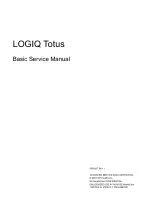
U S E R ‘ S M A N U A L
|
V I B A L A N C E 2 . 0 | 4
T E C H N I C A L C H A R A C T E R I S T I C S O F T H E V I B A L A N C E 2 . 0
In
Table 1
the technical characteristics of the Vibalance 2.0 are specified.
TECHNICAL CHARACTERISTICS
Vibratory motors (units)
Feed tension (vac)
Motor power (kW)
RPM
Vibration frequency (Hz)
Vibration cycles (Hz)
Vibration type
Amplitude (mm peak to peak)
Maximum acceleration range (g)
Time selection (s)
Display
Metronome
START/STOP photoelectric sensor
Vibratory structure weight (kg)
Control tower weight (kg)
Number of stabilizers
Weight of stabilizers (kg)
Vibratory structure material
Control tower material
Vibratory structure dimensions (An.x Pr.x Al.) (mm)
Tower dimensions (An. xPr.x Al.) (mm)
Vibratory structure surface (mm)
Vibratory plate surface
Maximum load (kg)
Resistance limit between both couplings (kg)
Noise dB(A)
Maximum inclination of the platform
VIBALANCE 2.0
2
220-240 (50 Hz)
0.18
3000
20-45
20-30/ 30-40 35-45/ 20-35 30-45/ 20-45
Vertical
High 2 Low 1
From 1 to 7 g
0-180
Tactile
Yes
Yes
49
7
4
5
Iron F111
Iron F111
760x760x315
383x286x324
700
Polyurethane
200
40
<70
23º ± 2º
Table 1. Technical characteristics of the Vibalance 2.0.







































